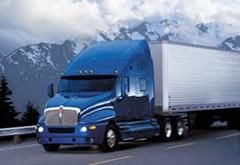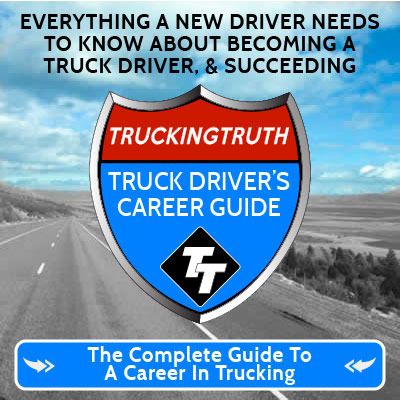A Regular GPS Or A Tablet?
Topic 19639 | Page 2
I had a Rand McNally 730 for two years and liked it a lot. About three weeks ago it just died. Lines on the screen, then nothing. I have read and heard from other drivers that have had similar experiences with the RM.
I trip plan with the RM atlas and Google maps, and I plan stops with TruckerPath and the RoadBreakers apps. Although now I'm starting to know where a lot of these places are just because I've been through pretty frequently since I'm running regional.
So I've been debating getting another GPS. It seems like part of my brain has started working better again now that I'm not using one, and I can think of a lot of better ways to spend $300 - $500. (Seriously, why so expensive? It's not the hardware, and the map updates aren't frequent enough and accurate enough to make me think they're employing thousands of people to work on these things. I seriously doubt they have dozens working on it. Maybe ten people.)
If truckers could navigate without GPS and Google maps all the way up until about five or ten years ago, why can't I? The only time I miss it is when there's some obscure turn coming up and it's dark.
Regional:
Regional Route
Usually refers to a driver hauling freight within one particular region of the country. You might be in the "Southeast Regional Division" or "Midwest Regional". Regional route drivers often get home on the weekends which is one of the main appeals for this type of route.

View More
I've gotta ask how often do you need a separate GPS?
I've had very few issues with using Qualcomm , RM Atlas for planning and alternate routing. Google maps for customer satellite view.
Initially it was high on my list, but after a couple of months way down on my priority list. Good cooler. (After 2 Colemans died) Good mattress CB... Grr, was fine in the Intl, now more stuff needed.. stoopid freightliner. XM radio TV, Blu-ray player.
Not in that order, but ya.. Still no pressing need to drop 400 on a GPS other than maybe Bling factor
The Rand McNally has a lot more truck stops and hotels with truck parking listed, as well as Walmart. The Qualcomm we use seems to be limited to the big chains and many great parking spots can be missed.
I usually set the QC to my destination and the McNally to my various stops/parking. This way I can immediately see if I'm running behind and more easily find parking. If I need to drive further or less than planned, its not a big deal cause I put several parking options in and can decide without stress.
The nav system on my qc is why I don't fear being replaced by self-driving trucks. I can't tell you how much time I've wasted waiting will it was "asking for root" many minutes later "building root" start driving "I'm sorry, I need to reboot. Goodbye!"
Qualcomm:
Omnitracs (a.k.a. Qualcomm) is a satellite-based messaging system with built-in GPS capabilities built by Qualcomm. It has a small computer screen and keyboard and is tied into the truck’s computer. It allows trucking companies to track where the driver is at, monitor the truck, and send and receive messages with the driver – similar to email.
I had the 8 inch rm tablet. Had it 6 months before it clunked out. I got it free from my trainer so I didn't really loose money but I did buy the small 7 inch from amazon and it has been absolutely flawless.
In addition to the qc, i have the 7 inch rm, a road atlas and i use both trucker path app and google maps to find my way.
OOS:
When a violation by either a driver or company is confirmed, an out-of-service order removes either the driver or the vehicle from the roadway until the violation is corrected.
New Reply:
New! Check out our help videos for a better understanding of our forum features

















Preview:










 TT On Facebook
TT On Facebook
I use Truckers Path for finding truck stops. Has way more than the Rand Mcnally or Qualcomm. IMO it's a must for any OTR trucker.
As far as GPS goes, I have the new Randy Mcnally 740. I like it but I mostly rely ln the Qualcomm for navigation, unless it loses signal which it does in the middle of nowhere. I mostly use the Rand Mcnally to tell me about upcoming weigh stations, sharp curves, and speed limit changes.
OTR:
Over The Road
OTR driving normally means you'll be hauling freight to various customers throughout your company's hauling region. It often entails being gone from home for two to three weeks at a time.
Qualcomm:
Omnitracs (a.k.a. Qualcomm) is a satellite-based messaging system with built-in GPS capabilities built by Qualcomm. It has a small computer screen and keyboard and is tied into the truck’s computer. It allows trucking companies to track where the driver is at, monitor the truck, and send and receive messages with the driver – similar to email.